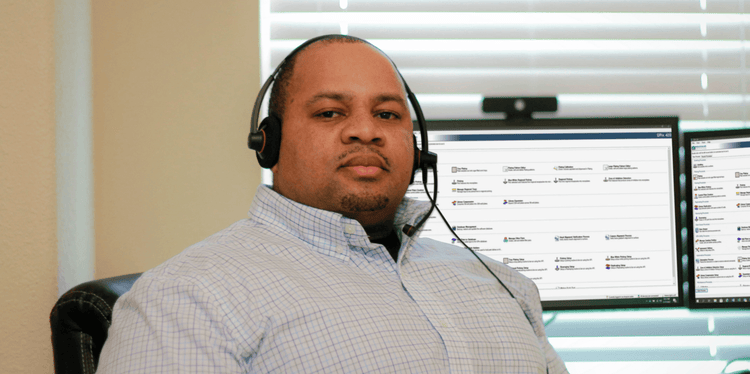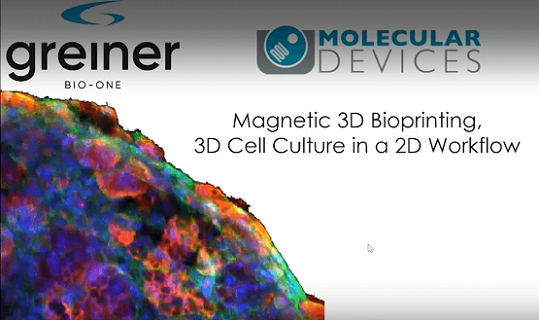
Get to know our Field Applications Scientist: Dwayne Carter
Dwayne Carter gives us a taste of 3D bioprinting, clone screening, and Caribbean cuisine
Dwayne Carter is a cell biologist and educator who joined Molecular Devices in November 2020. We asked Dwayne to tell us more about his background, career milestones, current role, and the future he envisions for clone screening.

Dwayne, please tell us bit about your background.
I am originally from the Caribbean island of Grenada. There, I started my career teaching mathematics. I relocated from Grenada to Wichita Falls, Texas to pursue my undergraduate degree in biology and chemistry. It was during this time that I was introduced to bioresearch working as a laboratory assistant. After obtaining my bachelor’s degree, I taught high school level chemistry over the next four years. I then moved on to graduate school at the University of Texas Medical Branch in Galveston, where I studied cell biology with an emphasis on liver biology. In particular, I studied how transcription factors play a role in xenobiotic metabolism (i.e., the metabolism of air pollutants). My training in liver biology led me to complete my post doc at a company in San Diego called Organovo. There I worked on engineering 3D bioprinted liver tissues.
What are 3D bioprinted tissues and how do they differ from organoids?
Organoids are 3D structures that are derived from stem cells or cells from a certain region within an organ. The cells are cultured with different growth factors/stimuli so that they can differentiate into the cell types that are representative of the functional cells within a particular organ.

Magnetic 3D Bioprinting, 3D Cell Culture in a 2D Workflow
Watch on-demand collaboration with Greiner Bio-One, Magnetic 3D Bioprinting, 3D Cell Culture in a 2D Workflow
Although they differ somewhat, the ultimate goal for both of these 3D cellular models is to help researchers advance their studies in drug efficacy and toxicity.
So how did you arrive at Molecular Devices and tell us about your current role?
Prior to arriving at Molecular Devices, I worked as a principal scientist at Emulate Biosciences in Boston, where I studied another emerging 3D cellular model called organ-on-a-chip technology. At Emulate, I had the opportunity to spend some time in the field and train users on the technology. The company realized that I really had a knack for training customers, and they transitioned me over to a Field Applications Scientist role, which eventually led me to Molecular Devices, where I’ve been working since November of last year.
I am a BioPharma Field Applications Scientist covering the southern region of the United States. In this role, I provide pre- and post-sale product training and scientific support for our portfolio of clone screening systems. This involves answering questions about our technology and giving presentations and/or webinars to support the sales team. I also train users after they have purchased our instruments.
What do you think makes the role of a Field Applications Scientist unique?
I think the role of a Field Applications Scientist is unique in that we have the hands-on experience of working in the lab and conducting experiments using the technology. We understand all of the different intricacies of the technology and the “tricks of the trade” that are needed to help customers drive their experiment toward a successful completion.
In addition to having that hands-on scientific and technology expertise, we are able to apply our teaching skills to help customers meet their goals. For me, the key is being patient and having the ability to adapt to different learning styles.
How do you overcome the challenges of training customers remotely during COVID?
Because our clone screening systems are pretty intuitive, they eliminate a lot of the hurdles associated with training first-time users. Our field engineers will typically go to the customer site to install the system hardware and software and ensure that it is fully operational in preparation for the customer training. Once the system is installed, the software is similar to a wizard in that it presents users with a series of steps or questions to help guide them on how to run the instrument and perform analysis. Likewise, the hardware is designed in such a manner that makes it easy for the user to change out or install certain components. This provides customers the comfort level to be trained remotely and get up and running quickly.
What excites you most about Molecular Devices and our portfolio of clone screening systems?
I am really excited by our commitment to continually innovate and meet the present and future needs of our customers. We provide them hardware and software solutions to address every phase of their workflow and ensure that they experience the most success. Our Customization and Automation team can work with them to help integrate robotics into our systems so that they can increase their walkaway time and spend time on more critical tasks.
What are some of the emerging applications for clone screening?
I think clone screening will play a significant role in drug discovery. There is a huge translational and productivity challenge in the drug development process. It typically takes 10-15 years for a drug to go from inception to reaching the market. The challenge is that there is no good way to predict how the drug will perform in the clinic. Also, the processes to validate drug efficacy and safety are very cumbersome and require a lot of FTE hours. That being said, there is a growing push for tissue engineering so that we can model organs or systemic diseases in vitro and have something that is more predictive than the traditional animal models. We can get iPSC-differentiated cells and use cloning techniques like CRISPR to engineer those cells to produce organs that are more representative of the population that we are interested in.
This then leads to personalized medicine. Here, we focus on a patient’s cells to design treatments that have a mode of action that is more targeted to his/her metabolic profile. Due to the co-morbidities, diet, environment, and other surrounding factors that make the disease different, clone screening can help speed up the drug development process.
Lastly synthetic biology is being used to engineer existing biology to take on new functions. For example, biology can be re-engineered to create biofuels, foods for consumption, new drugs, and systems to improve quality of life. I think clone screening will also play a significant role in this field.
What advancements do you envision for clone screening over the next few years?
I would envision the ability to create fully automatable systems that can address any problem involving clone screening, antibody discovery or cell line development. This will make the drug development process more efficient, especially as it relates to personalized medicine.
What do you enjoy doing in your spare time?
I enjoy spending time with my family. I have two young children. My son (age 5) has autism, and my daughter (age 6) is in a gifted and talented program. I enjoy seeing them both develop and grow in their own unique way. Whenever I have a chance to connect virtually with my buddies who are spread across the U.S., we play video games. I also enjoy listening to country music and upcycling my thrift store finds into something new and unique. Lastly, I have to admit that one of my favorite hobbies is eating Caribbean food!
What is your favorite Caribbean food?
My favorite food is doubles.
Doubles are basically two flatbreads that are filled with channa (i.e., curried chickpeas). To prepare the flatbreads, you mix flour, curry powder, yeast, water, and vegetable oil into a dough. Then divide the dough into small round pieces and deep fry them until puffy and golden. Then place the channa between the two flatbreads and serve them with a sweet tamarind sauce. If possible, I would eat doubles every day of the week. They are absolutely delicious!

To learn more about our solutions for antibody discovery and cell line development, visit our clone screening systems page.